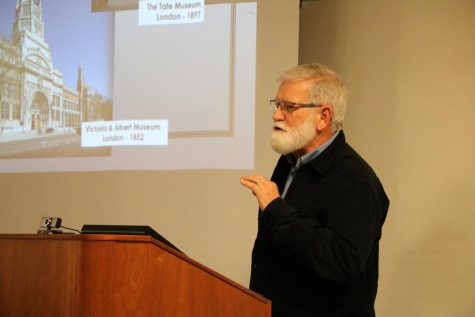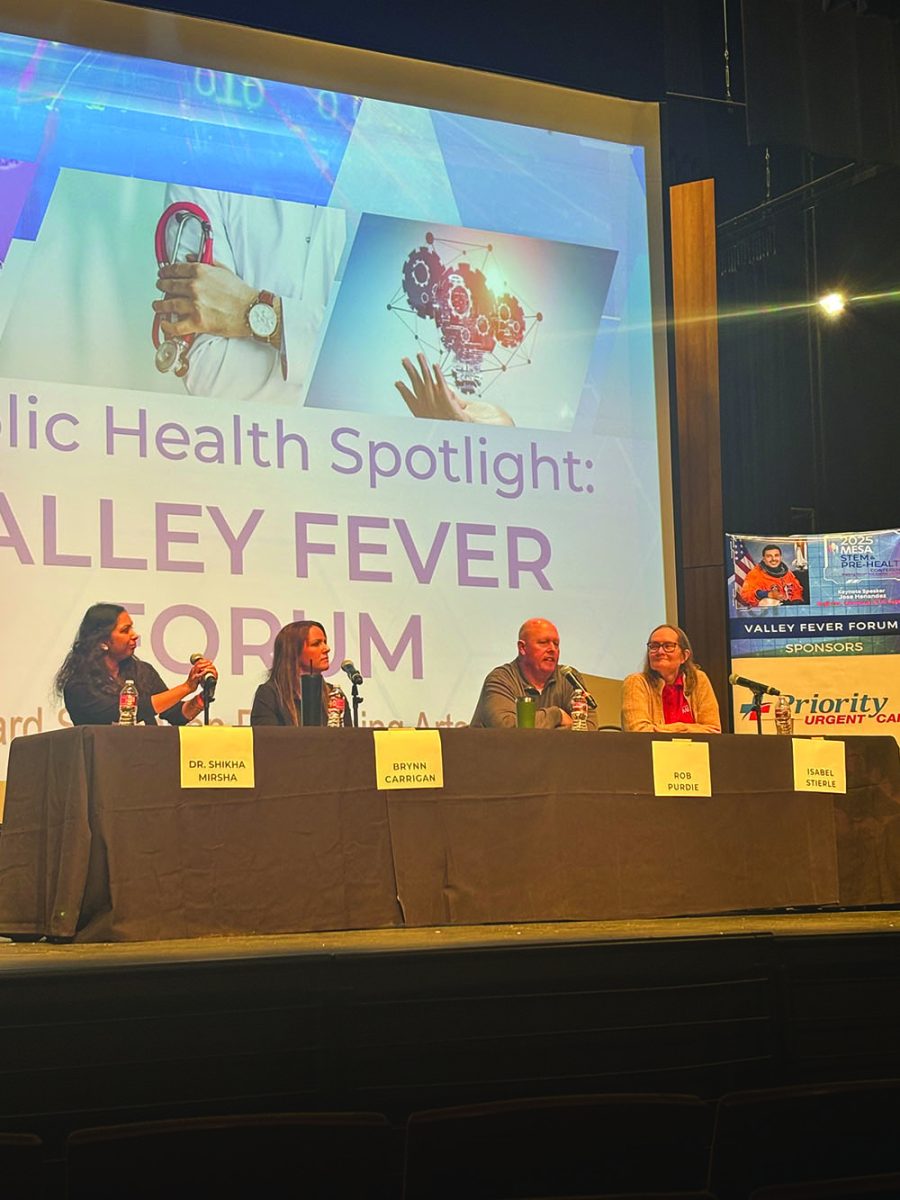BC details the history of museums
November 25, 2018
There are approximately 850 million visits each year to American museums, more than the attendance for all major league sporting events and theme parks combined.
“Who knew?” Professor David Koeth asked when listeners gave puzzled reactions to this statement.
Different aspects of museums were shared by Bakersfield College faculty members Duane Anderson, Rae Ann Kumelos, Nan Gomez-Heitzeberg, David Koeth, and Susan Pinza in the last Art, Architecture, and Archetypes discussion on Nov. 14.
The panel members walked the audience through the history of museums, their importance to scholarly values, and their complex architectural builds.
Pinza drew on her personal experiences visiting museums to tell of what she thinks is their main purpose.
“When I go to a museum … I try to make connections to previous experiences, to other people, to different worlds,” Pinza said.
“Whatever the year, whatever the millennium … we’re all very similar. We have a lot of similar interests, a lot of human nature being the same, whether it was 2,000 years ago or now.”
Koeth outlined the birth of museums; more specifically, their ties with the rich.
In the Renaissance 1500s, wealthy people would fill

Professor of Architecture Duane Anderson shows the audience pictures of his favorite architectural designs of different museums around the world.
their large empty spaces of their houses with expensive art.
Once in a while, by appointment, they would let others view their collection for entertaining or educating purposes. Eventually, these sorts of collections would be donated to public organizations, a concept that would soon start to spread.
“We care about art because we value cultural history as much as biological history,” Pinza said. “Its preservation is essential to knowledge and wisdom.”
Kumelos’ fascination was in Greek mythology. She told the audience the story of Mnemosyne, the Goddess of Memory, who mated with Zeus to birth to the nine Muses.
Kumelos, in her own visits to museums, has marveled at displays such as the Magna Carta, an original book cover painting for “The Lord of the Rings,” and a 1608 map of Virginia detailed by Captain John Smith.
Anderson let the audience see pictures of many different museums around the world, including the British Museum in London, Santiago Calatrava’s Milwaukee Art Museum, and Daniel Libeskind’s Denver Art Museum.
A professor of architecture, Anderson wanted to show how the beauty of a museum is displayed not only inside but also in its architectural build, raising an important question for museum-lovers.
“The art in the museum or the museum that’s housing the art: which is more significant?” Anderson asked. “As an artist and architect, my answer to that question is ‘yes.’”





